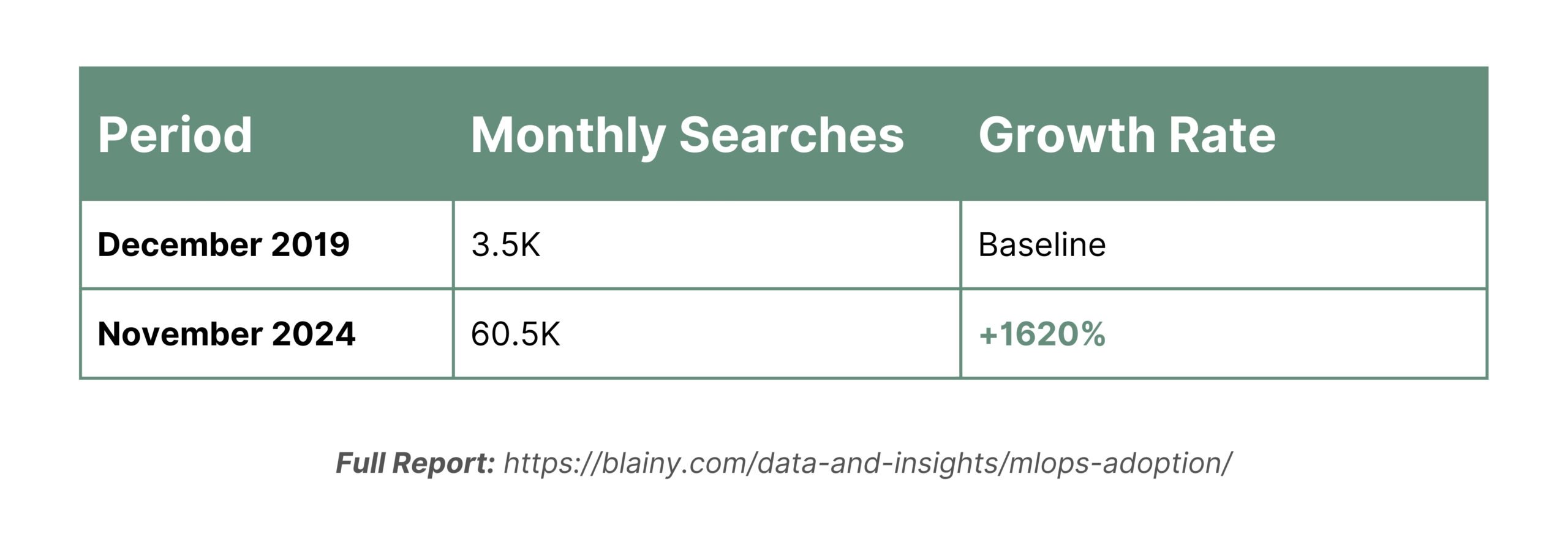
The MLOps landscape is undergoing a remarkable transformation in 2024, driven by accelerated enterprise adoption and deeper operational integration. This report provides a detailed analysis of the current state of MLOps implementation, market dynamics, and future growth projections, underpinned by robust search interest data and key industry insights.
Key findings include:
This report delves into these trends, offering actionable insights for stakeholders navigating the rapidly evolving MLOps ecosystem.

As depicted in the graph below, the search volume for MLOps increased from 3.5K to 60.5K searches between December 2019 and November 2024, reflecting a 1620% growth. This surge illustrates a growing interest in MLOps solutions, signaling their increasing relevance and adoption across industries.
The analysis reveals three key shifts currently shaping the MLOps landscape:
The data signals a significant evolution in the MLOps ecosystem, with several indicators highlighting its maturing role:
This analysis leverages comprehensive data from Exploding Topics, a leading search analytics platform, to track and analyze MLOps-related search patterns and market trends over the past years [4]. The methodology employs a systematic approach, focusing on search volume data to gauge growing interest and predict future trends.
Primary Data Parameters:

The research methodology centers on three key components:

To further refine the understanding of MLOps market trends and adoption, the following areas require further exploration:
The analysis reveals substantial growth in MLOps adoption, as evidenced by key performance indicators:

Three primary factors are driving the widespread adoption of MLOps across enterprises:
Organizations are prioritizing four key areas for successful MLOps integration:

The current state of MLOps adoption reveals clear signs of market maturation, as highlighted by several key indicators:
Note: These resources provide comprehensive data on MLOps market trends, implementation challenges, and lessons learned from AI incidents. The information has been used to support the analysis and recommendations presented in this report.